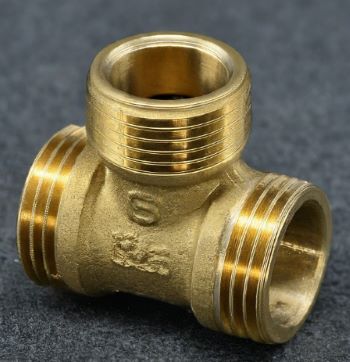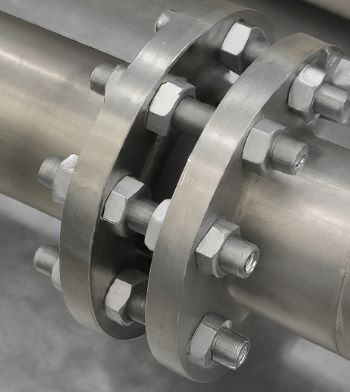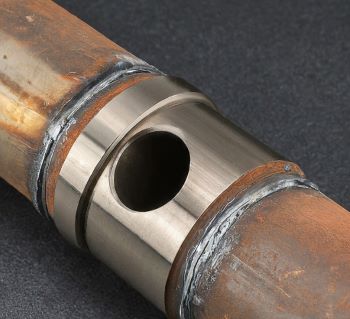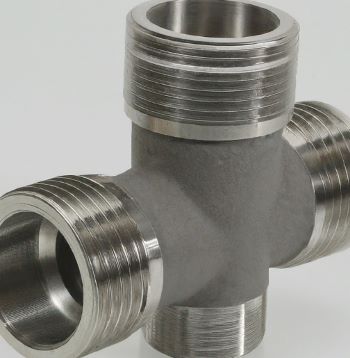Ever had a plumbing leak send shivers down your spine? In the intricate world of pipes and valves, secure connections are paramount. This is where pipe union fittings step in, providing a reliable and accessible solution for joining pipes.
But with various types of union fittings available, navigating their world can be a puzzle. Fear not, DIY warriors and plumbing enthusiasts! This ultimate handbook equips you with everything you need to know about pipe union fittings.
Types of Pipe Union Fittings
The world of pipe union fittings offers a diverse selection to suit different needs. The most prevalent types are broken down as follows:
Threaded Unions (malleable iron, brass, stainless steel):
These unions utilize internal and external threads for a secure connection. Common materials include malleable iron for strength. Brass is chosen for affordability, and stainless steel for resisting corrosion.
Flanged Unions:
Think of these as pipe connectors with bolted collars. Bolts and a gasket secure the flanges on each pipe end. This setup is ideal for high-pressure use.
Welding Unions:
For a permanent, high-pressure bond, welding unions are the way to go. The union body is welded directly onto the pipe ends, creating a watertight seal.
Grooved Unions:
These innovative unions feature machined grooves on the pipe ends. The coupling has matching grooves and a rubber gasket. It slides over the pipes, offering a quick and secure connection.
Compression Unions:
These unions use a compression nut and ferrule. They create a tight seal by compressing the pipe against the fitting body. They’re a good choice for situations requiring frequent disassembly.
Push-Fit Unions:
For a quick and easy connection, push-fit unions are a popular choice. The pipe simply inserts into the fitting. It has a built-in gripping mechanism and is ideal for non-critical uses.
Choosing the Right Pipe Union Fitting
Selecting the perfect pipe union fitting isn’t a one-size-fits-all situation. The following are some crucial points to consider:
➡️ Pipe Material and Size: Match the union material and size to your existing pipes for seamless compatibility.
➡️ Application Pressure and Temperature: Ensure the union’s pressure and temperature ratings exceed your system’s requirements.
➡️ Space Constraints: For tight spaces, consider compact unions like compression or push-fit types.
➡️ Ease of Installation and Maintenance: If frequent disassembly is needed, prioritize unions like threaded or compression types.
➡️ Cost Considerations: While cost is a factor, prioritize quality and suitability for long-term value.
Installation Tips for Flawless Connections
Installing a pipe union fitting can be a breeze with the right knowledge. Here’s a step-by-step guide for common union types:
-
Prepare the Pipes: Cut the pipes to the desired length, clean any burrs, and ensure a square cut for proper fit.
-
Apply Thread Sealant (if applicable): For threaded unions, apply thread sealant according to the manufacturer’s instructions for an extra layer of leak prevention.
-
Assemble the Union: Carefully screw the threaded ends or insert the pipes into the fitting (depending on the type). Tighten the nut or coupling with the recommended torque using appropriate tools.
-
Leak Testing: Once assembled, pressurize the system and check for leaks at the connection point. Tighten any loose connections or redo the process if leaks persist.
Applications of Pipe Union Fittings
The versatility of pipe union fittings extends far beyond simple repairs. Here are some common use cases:
➡️ Plumbing repairs and maintenance: Unions facilitate easy removal and replacement of pipe sections during repairs or upgrades.
➡️ Meter installation and removal: Unions enable the easy installation and removal of meters for maintenance or reading.
➡️ Connecting valves and gauges: Unions provide convenient access points for installing or removing valves and pressure gauges.
➡️ Joining dissimilar pipe materials: Transitioning between different pipe materials like copper and PEX is possible with the help of specific union types.
➡️ Facilitating pipe expansion and contraction: Unions accommodate thermal expansion and contraction of pipes, preventing stress and potential leaks.
Benefits of Using Pipe Union Fittings
Pipe union fittings offer a multitude of advantages for your plumbing system:
➡️ Leak-proof connections:
When installed correctly, unions create a secure and reliable seal, minimizing the risk of leaks.
➡️ Easy installation and disassembly:
Unions make it easy to connect and disconnect pipes. They save time and effort during maintenance.
➡️ Saves time and labor during maintenance:
Taking apart a union for repairs or modifications is much faster. It’s faster than using traditional methods like cutting and soldering.
➡️ Provides access for cleaning and inspection points:
Unions offer convenient access points for cleaning pipes or inspecting internal components.
➡️ Accommodates pipe misalignment:
Unions can help compensate for minor misalignments between pipes, ensuring a proper connection.
Maintenance and Troubleshooting
Like any plumbing component, pipe union fittings require proper care for optimal performance. Here are some maintenance tips:
➡️ Regular inspection for leaks and signs of wear: Periodically check unions for signs of leaks, corrosion, or loose connections.
➡️ Retightening loose connections: Over time, unions might develop slight looseness. Retighten them to the recommended torque specifications.
➡️ Replacing worn-out parts: If any part of the union shows significant wear or damage, replace it with a compatible component.
➡️ Proper storage of disassembled unions: When disassembling unions for storage, ensure proper storage with caps or plugs to prevent dust and debris from entering.
Safety Precautions
Safety is paramount when working with plumbing systems. The following are important safety reminders:
➡️ Using appropriate tools and personal protective equipment (PPE): Always use the right tools for the job and wear appropriate PPE like gloves and safety glasses.
➡️ Following recommended pressure and temperature ratings: Never exceed the pressure and temperature limitations of the chosen union fitting.
➡️ Working with the system depressurized: Before working on any plumbing connections, ensure the system is depressurized to avoid unexpected water surges.
Conclusion
Pipe union fittings undeniably ensure reliable and easy connections in plumbing. By understanding the types, factors, and benefits of each, you can choose the right union fitting for your next plumbing project.
Remember, for complex plumbing tasks, consulting with a qualified plumber is always recommended.
Post time: Apr-24-2024





